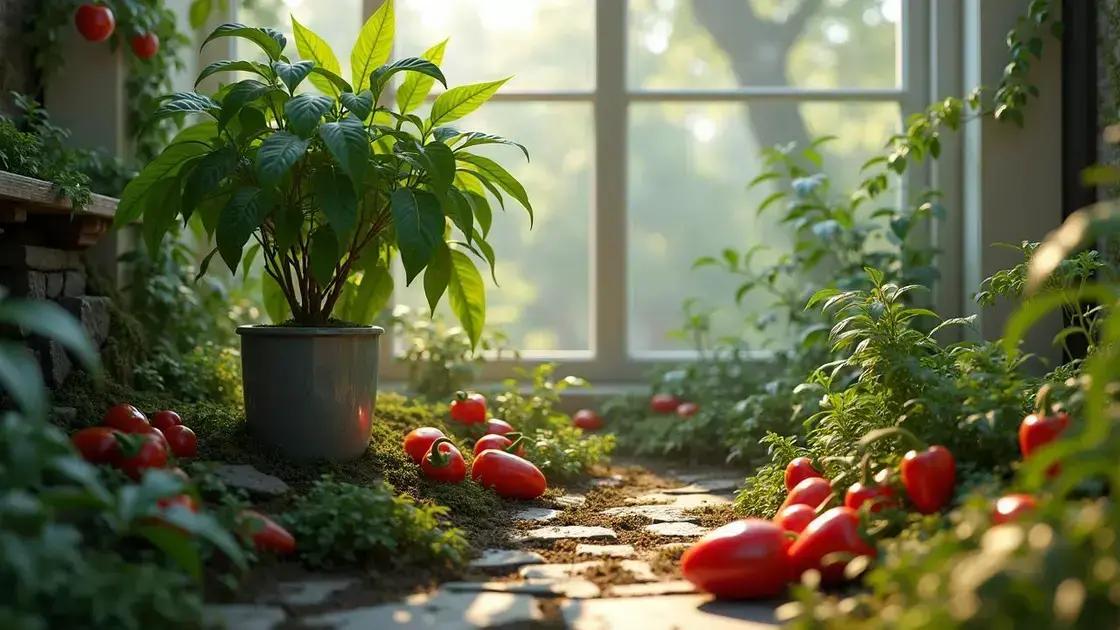How to Care for Ornamental Pepper Plant: 7 Essential Tips for Thriving
How to care for ornamental pepper plant is crucial for ensuring vibrant growth and fruitfulness. Imagine transforming your home into a colorful display of these stunning, spicy beauties! With their vibrant fruits and unique foliage, ornamental peppers can be an eye-catching addition to your indoor or outdoor space. In this article, we’ll explore how you can nurture these plants effectively and enjoy their beauty year-round.
Table of Contents
ToggleWatering techniques for ornamental peppers
Watering techniques for ornamental peppers play a crucial role in establishing healthy plants. Understanding how to water your ornamental pepper plants effectively is key to ensuring their vibrant growth and fruitfulness. Here, we’ll delve into practical watering strategies to keep your ornamental peppers thriving.
- Frequency of watering: Ornamental peppers require consistent moisture, but avoid overwatering. Typically, watering once a week is sufficient, but adjust based on climate and pot size.
- Soil moisture check: Always check the top layer of soil. If it’s dry about an inch down, it’s time to water your plants.
- Best time to water: Water your ornamental peppers in the early morning or late afternoon to minimize evaporation. This ensures that the moisture penetrates the soil before the heat of the day.
Optimal watering approaches
- Bottom watering: Place pots in a tray of water and allow the soil to absorb moisture from the bottom. This encourages deeper root growth.
- Drip irrigation: For larger gardening setups, consider installing a drip irrigation system. This provides a consistent moisture level without over-saturation.
- Use of organic mulch: Adding a layer of organic mulch can help retain soil moisture, reduce weed growth, and regulate soil temperature.
Signs of improper watering
- Overwatering: Yellow leaves, root rot, and wilting plants.
- Underwatering: Drooping leaves, dry soil, and stunted growth.
Remember, while caring for your ornamental pepper plants, it’s also beneficial to combine proper watering techniques with exploring indoor gardening techniques for overall health and growth.
By adopting these watering techniques for ornamental peppers, you will create an environment where these colorful plants can flourish and produce their striking fruits. Always observe and adjust your watering habits according to the specific needs of your plants as they grow.
Optimal sunlight conditions for healthy growth

Optimal sunlight conditions for healthy growth are essential for cultivating robust ornamental pepper plants. These vibrant beauties thrive best when provided with the right amount of light, which can dramatically influence their health and productivity.
Light requirements for ornamental peppers
- Full sun exposure: Ornamental peppers love bright, direct sunlight. Aim for at least 6 to 8 hours of sunlight daily to promote healthy fruiting and foliage.
- Indirect light for indoor plants: If you’re growing them indoors, place your pots near south or west-facing windows where they can receive ample natural light.
- Avoiding low light: Consistent low-light conditions can lead to weak, leggy growth and fewer fruit production. Aim to adjust their placement as needed.
Understanding light exposure variations
- Direct sunlight: In outdoor gardens, monitor your plants to ensure they’re not scorched during peak midday sun.
- Partial shade: During the hottest days, some shade can help protect the plants. However, ensure they still receive adequate light overall.
- Artificial light options: For indoor gardening, consider using grow lights to supplement natural light in seasons with less sunlight.
For best results, blend sunlight conditions with exploring indoor gardening techniques. This multifaceted approach helps to create an ideal growth environment.
By recognizing and adapting to the optimal sunlight conditions for your ornamental pepper plants, you can ensure healthy growth and a radiant display of colors that enhance your home or garden.
Managing pests and diseases in ornamental pepper plants
Managing pests and diseases in ornamental pepper plants is essential to maintaining their health and vibrancy. Identifying and controlling potential threats can save your plants from severe damage.
Common pests affecting ornamental peppers
- Aphids: These small insects suck sap from leaves, leading to curling and stunted growth. They often leave a sticky residue.
- Spider mites: These tiny pests can create webbing between plants and cause discolored leaves. They thrive in dry conditions.
- Whiteflies: Similar to aphids, whiteflies feed on sap and produce sticky honeydew, attracting ants and leading to sooty mold.
Effective pest control strategies
- Regular inspection: Check your plants frequently for early signs of infestation. Catching pests early makes control much easier.
- Natural predators: Introduce beneficial insects like ladybugs and lacewings to your garden; they naturally feed on pests.
- Insecticidal soap: This can be sprayed on affected plants to suffocate soft-bodied insects such as aphids and spider mites.
Common diseases in ornamental pepper plants
- Powdery mildew: A fungal disease that creates white, powdery spots on leaves, it thrives in high humidity. Improve air circulation around plants.
- Root rot: Caused by overwatering, this can kill pepper plants. Ensure proper drainage and avoid waterlogged soils.
Preventive measures for a healthy garden
- Use high-quality soil and consider exploring indoor gardening techniques that include pest-resistant practices.
- Rotate crops annually to reduce disease buildup in the soil.
- Maintain proper watering and sunlight conditions to strengthen plant health, making them less susceptible to issues.
By effectively managing pests and diseases in ornamental pepper plants, you can ensure a vibrant and flourishing garden. Stay proactive with your care and watch as your plants thrive under your attention.
In conclusion
Caring for ornamental pepper plants can be a rewarding experience when you understand the essential factors that contribute to their growth and vitality. By implementing effective watering techniques, providing optimal sunlight conditions, and managing pests and diseases, you can create a thriving environment for these vibrant plants. Remember, continuous learning and adapting your care methods will yield the best results. For even more insights, check out these tips on enhancing your indoor garden and take your gardening journey to the next level!

